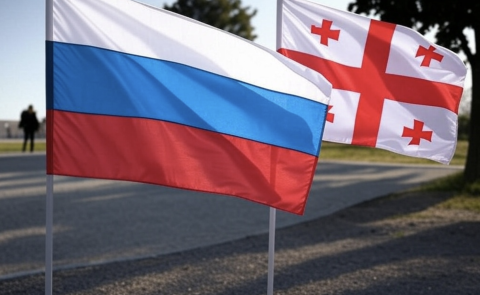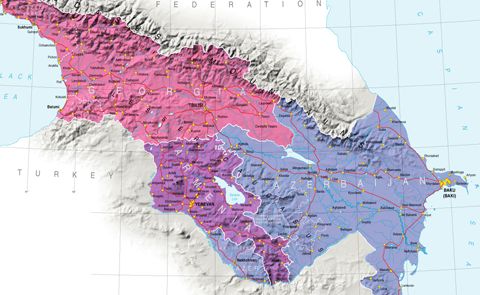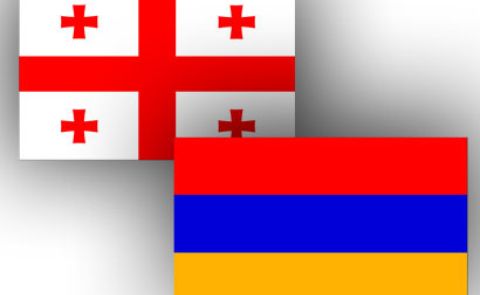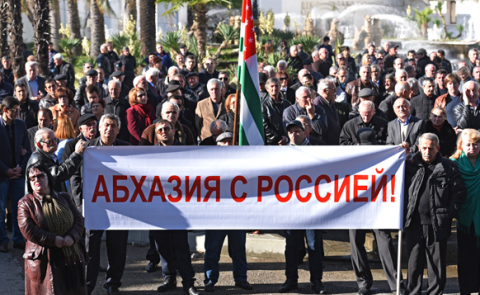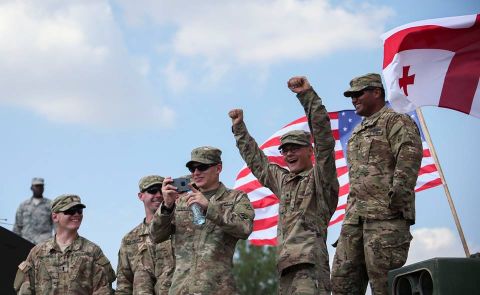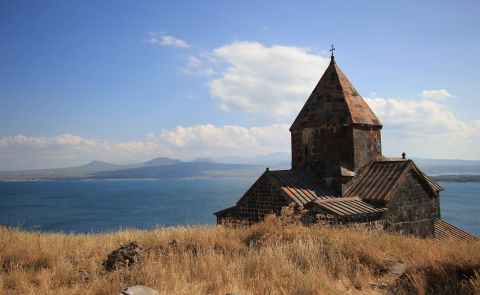
The Fate of the Minsk Group: Reflecting the Contradictions of the International Community in the Karabakh Conflict
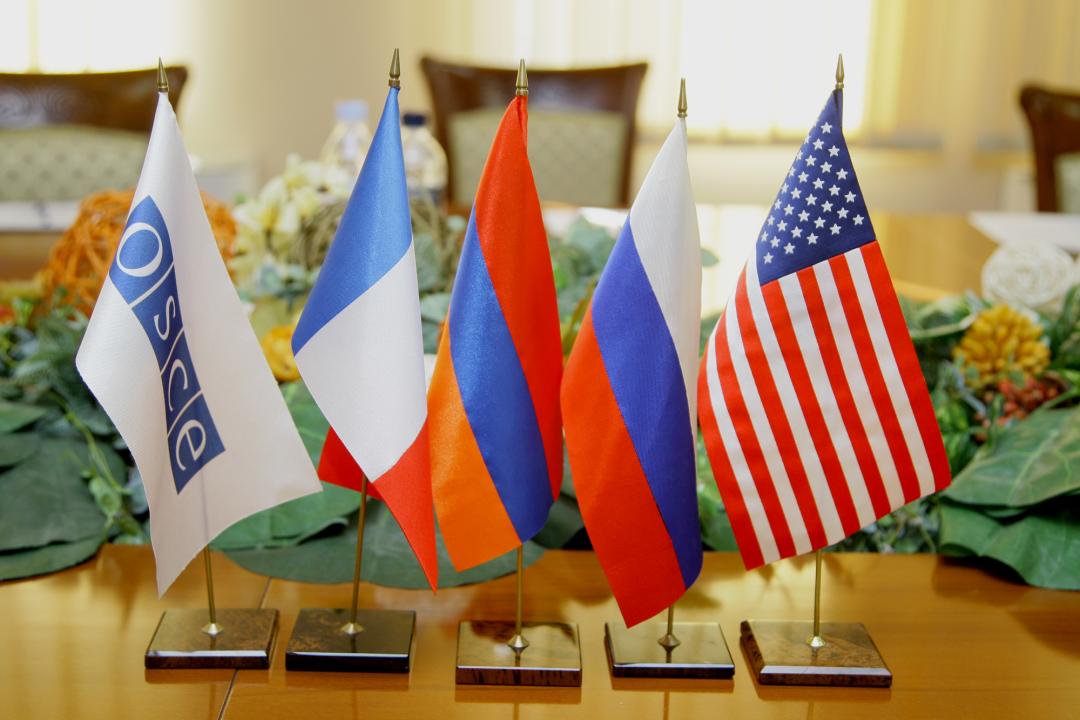
The second Karabakh War put an end to the existence of the Minsk Group. However, the three co-chairs kept their activities and agendas separate, with different approaches and sometimes overlapping, sometimes diverging goals.
The Dismissal of the Minsk Group
In 1994, when a ceasefire froze the first Karabakh war, a facilitating triumvirate of co-chairs – France, the United States, and Russia – was established, tasked with preparing the ground for a peace conference. As time passed by, there was less and less talk about the would-be conference, expected to be held in Minsk with an extended negotiating table, and it was all about the triumvirate, the Minsk Group. The three co-chairs in practice were in charge of bringing together and finding the meeting point for diverging uncompromising positions. It is possible to freeze a battle but not a political process, and the so-called frozen conflict of Nagorno-Karabakh kept evolving for three decades, affecting the negotiation process. The separatists dropped off the negotiating table; it was more and more a direct confrontation between Baku and Yerevan, with the co-chairs shuttling from one capital to the other.
The co-chairmanship lost legitimacy when, in 2020, the military solution replaced a diplomatic one. Baku clearly declared the group useless and a failure and the aggression against Ukraine made working with Russia a very thorny issue. Individually or in coordination, the former members of the Minsk group are trying to shape new negotiating formats to prevent a new Baku-Yerevan war, and to damage control the impact of the unnegotiated, military solution.
The key issues are the new sources of conflict and the humanitarian situation. It is still unsolved how the restored Azeri sovereignty on the territory of Karabakh should translate into the sovereignty of the Armenian population, which fled en masse. Armenian Karabakhis should be enabled to return, to have their property and cultural rights preserved, and peaceful inter-ethnic co-existence should be guaranteed with the Azeris displaced after the first Karabakh war who are now re-entering Karabakh, with the so-called “Great Return” program.
France
France enjoys special relations with Armenia. It hosts an influential Armenian diaspora. The French public opinion is generally sensitive to the fate of Armenians, and the government and political parties’ representatives must factor it into their political strategies. Since the breakup of the Second Karabakh War and the de facto dismissal of the Minsk group, France has been very vocal about the protection of Armenia and Armenians. Paris has called for the unhampered access of humanitarian help to all Armenian areas affected by the conflict and for the presence of a force of interposition. It has strongly supported the idea of having an international-mediated separatist-Baku dialogue, and it is the promoter of the European Mission in Armenia, the civilian mission of EU states and Canada that monitors the Armenia-Azerbaijan border.
Through EU mechanisms, France has tried to preserve its mediator role in the conflict. After 2020, when it was clear that the military solution had left too many issues unsolved and potentially created room for a new confrontation, Brussels stepped in with its own new mediating format: a tripartite negotiation held under the auspices of the President of the Council, Charles Michel. In Brussels, during the first meeting of the tripartite format, for the first time, the Armenian Prime Minister Nikol Pashinyan and Azerbaijani President Ilham Aliyev were left alone in the room for a frank bilateral talk. The tripartite format proved to be rather satisfactory for the parties: Armenia and Azerbaijan have their respective sponsor states, but they are both open to interactions with whom they believe to be honest brokers.
When this tripartite format was stretched to five because France joined in and Germany too, the format started to shake. After the first exploratory meeting of this newly proposed quintet in Brussels, Paris, Berlin, Baku, and Yerevan, everything fell apart. Baku rejects this enlarged format, and this bump on the way to EU mediation risks making the entire EU mediating effort a thing of the past. In October 2023, Aliyev did not attend the Granada Summit, putting the blame on France and its regional ambitions. The scheduled tripartite meeting in Brussels in late October did not take place, and a new meeting is yet to be confirmed.
France’s tentative effort to preserve its mediating role is likely unviable. France and Armenia opened the door to military cooperation. It’s not the first time in the mediation process that one of the mediators is also a weapon provider, but it’s clear that this time this is unacceptable for Baku. Aliyev openly disses French foreign policy, brands it as neo-colonial, and hosts fora for the promotion of independence of what he describes as nowadays colonies, such as the Overseas Territories and the Corsican Island. In mid-November, France's Vigilance and Protection against Foreign Digital Interference (VIGINUM) revealed a disinformation campaign allegedly originating from Azerbaijan with the goal of undermining Paris' readiness to host next year's Olympic Games.
United States
In between the two phases of the second Karabakh war – the 2020 44-day war and the September 19, 2023, operation – the US activated its facilitation mechanism. The principle underneath the US mediation strategy is similar to the European one: the conflicting parties are the only ones that can draw up a peace plan. The US seems uninterested in nailing its signature on the document that would put an end to decades of conflict and animosity. Washington therefore acts as a facilitator, not a mediator. In this role, it hosted meetings and long sessions of discussion. In particular, it launched a so far unique format: a no-stop bilateral discussion between the Armenian and Azerbaijani Ministers of Foreign Affairs at the George Schultz National Foreign Affairs Training Center in Arlington, Virginia. This protracted negotiation session lasted three days, on June 27-29, 2023.
The degree of engagement in the Karabakh war is high in the Biden administration but still lower compared to French, EU, and Russian commitments. While Emmanuel Macron, Charles Michel, and Vladimir Putin all sat at the table of negotiations and regularly held phone conversations and direct contacts with Aliyev and Pashinyan, for the US, it’s the State Department and different US agencies in charge. On September 25, while Karabakhis were still leaving the region, USAID Administrator Samantha Power arrived in Armenia to affirm U.S. support for Armenia’s sovereignty and democracy and to help address humanitarian needs. Power was joined by U.S. Department of State Acting Assistant Secretary for Europe and Eurasian Affairs Yuri Kim. She met both Pashinyan and Aliyev and offered financial support for the refugees. The Department of State openly expressed concern about the possibility of a new wave of war and violence and put pressure on Azerbaijan to respect internationally recognized borders and to open the door to a monitoring mission. Baku agreed to enable the visit of the UN mission in Azerbaijan to the region. This step is definitely far less than what Washington proposed, but it’s far more than what happened so far: on October 1, the first UN staff ever crossed into Karabakh, only to find it almost entirely depopulated.
The US role seems to have fallen into disgrace since, in mid-October, the House of Representatives Committee on Foreign Affairs Subcommittee on Europe held a hearing on “The Future of Nagorno-Karabakh” with U.S. Assistant Secretary of State for European and Eurasian Affairs James O’Brien and Deputy Assistant Administrator in the Bureau for Europe and Eurasia at USAID Alexander Sokolowski, and in early November, the Senate adopted the “Armenian Protection Act of 2023”. Azerbaijan voiced full dissatisfaction with the contents expressed and the measures adopted and launched an aggressive campaign against USAID, questioning the role of the organization and, personally, - the professionalism of Samantha Power. An expected meeting on November 20 was canceled. Asked by journalists to comment, Spokesperson for the US Department of State Matthew Miller stated: “[…] we would be willing to facilitate those talks, as we have in the past, and we welcome other countries doing so as well”.
After the full capitulation of Karabakh in September, U.S. President Joe Biden and Secretary of State Antony Blinken, President of the European Council Charles Michel, President of the European Commission Ursula von der Leyen, and High Representative of the European Union for Foreign Affairs and Security Policy Josep Borrell issued a joint statement on October 20, 2023, in Washington: “We remain committed to advancing a lasting peace between Armenia and Azerbaijan based on mutual recognition of sovereignty, inviolability of borders, and territorial integrity. We urge Azerbaijan to ensure the rights and security of those who remain in Nagorno-Karabakh, as well as those who wish to return to their homes. We also call for all parties to adhere to the principle of non-use of force and the threat of use of force.” In a few lines, this is the coordinated US-EU and France position and the highest-level declaration issued by the US on the conflict and its expected solution, whatever role the US will be willing, able, or allowed to play.
Russia
After the war of 2020, Russia had managed to position itself perfectly. It had surpassed the other co-chairs and asserted itself as the key mediator in the conflict, as in 1994. Almost 30 years later, it looked like only Russia could impose a ceasefire and put its signature on any relevant document concerning the Karabakh war. Indeed, the Russian approach is different from the EU, France and the US ones: Moscow wants a tripartite solution where, whatever Armenia and Azerbaijan agree upon, Russia is a direct part of the deal, either as the guarantor or as a mediator with implementing tasks.
The 2020 tripartite agreement perfectly mirrored this strategy and gave Russia an even mightier leveller. From the 1994 ceasefire to the 2020 one, there were no interposition forces in the region. The only military forces on the ground were the Armenian army (deployed as well in Karabakh) the secessionist army, and the Azerbaijani one. The tripartite declaration of November 2020 entitled Russia to ground a peacekeeping force in Armenian Karabakh and to open monitoring sites in Azerbaijan. These sites have recently agreed to be staffed with Turkish military personnel as well.
Beside Azerbaijan, Russia was the one mostly benefiting from the 2020 44-day wars: it increased its military presence in the South Caucasus, re-established its role as the single mediator of the conflict, and managed to preserve equally good relations with the conflicting parties. Yerevan was disappointed by the lack of support and intervention from Moscow during the war, but what was left of Karabakh was believed to depend on the Russian presence. Therefore, Armenian security dependence in general on Russia remained unchallenged. Moreover, being at the negotiating table and part of the deal, Moscow managed to acquire additional benefits. It pushed its agenda in the drafting of economic and transport communications that were to be opened and assumed a leading role in the tripartite working group on the determination and delimitation of borders between Armenia and Azerbaijan.
The border dispute was to become one of the most thorny ones in the three years that preceded the last phase of the war. Armenia and Azerbaijan have to rely on the XX century maps, when the current republics and their borders took shape. An additional point of contention arises regarding the specific map, year, and borders depicted, and Moscow possesses the original political and military chart from the Soviet era.
The Big Moscow Plan Fell Apart in September 2023
There is no longer an Armenian Karabakh to preserve, and it is unclear what the Russian military presence is needed for. Azerbaijan made no secret, ever, that the Russian peacekeepers were meant to be only temporarily stationed in the region. Their mandate expires in 2025, and it is possible that their presence will be tolerated by Baku till that date, but very unlikely for longer. Yerevan made it clear that once the peacekeepers, whose presence for the preservation of the Armenian community in Karabakh proved to be useless, withdraw, there’s no place for them in Armenia, and they are expected to go back to Russia. Moscow is pressing to reformulate the mandate of the peacekeeping contingent. After the flee of almost the entire Armenian population and the disarmament of the local army, they are dismantling the military posts and joining the Azeri patrolling. But it is hard to believe that Moscow's ambition to preserve its 1200 military staff stronghold in Azerbaijan will succeed. Before the war, Azerbaijan was one of the post-Soviet republics that did not host a Russian military base, and there’s no reason to believe that Baku finds it a valuable option now.
Moscow has as well lost its leadership role in the mediation processes, with new formats emerging and with Armenia less and less interested in safeguarding the Russian presence in the peace process. Trade and economic communications see other regional players who are very well positioned, first of all Türkiye, and any option must take into consideration their plans. As for the maps, Yerevan dismissed the Russian claim that the necessary originals are to be found only in Moscow.
While it is true that Moscow had its voice heard when it was time to declare the September 2023 fighting over, it does not mean that it preserved the same relevance as in November 2020. The loss of Karabakh, the disappearance of a post-soviet de facto state, and the establishment of the principles of territorial integrity and sovereignty after a breakaway conflict don’t bode well for Russia, both as a mediator and as a state that fuelled breakaway conflicts to preserve its interests in its perceived spheres of interest.
Contributed by Dr. Marilisa Lorusso

